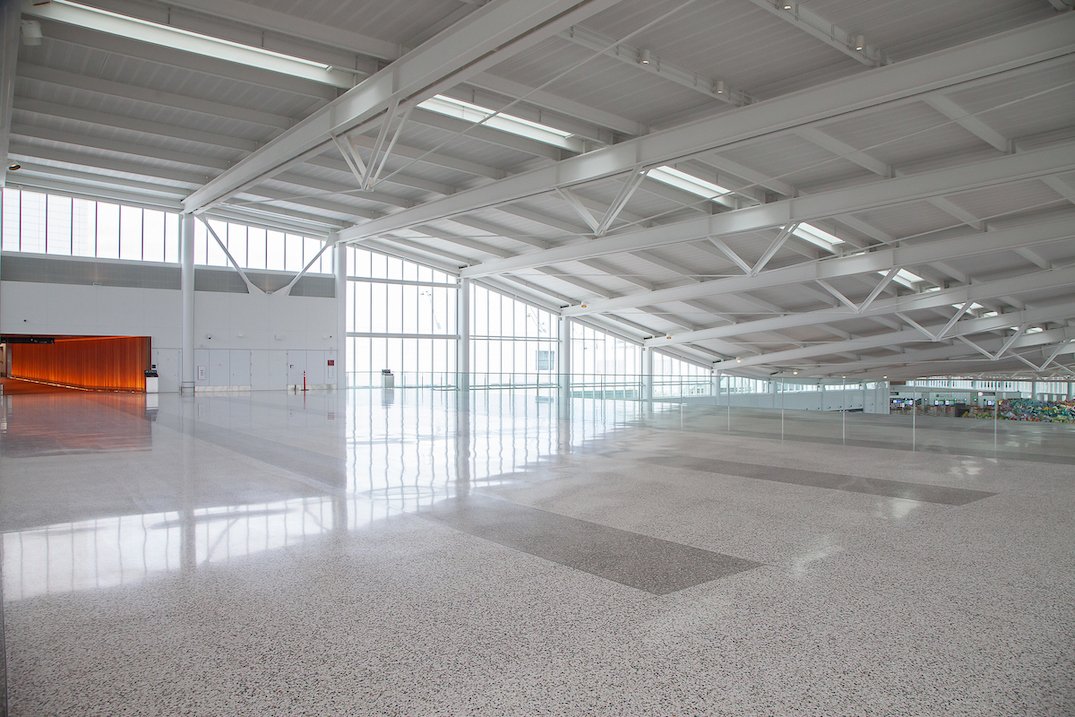Seattle-Tacoma International Airport completes huge $1 billion expansion
The completion of the massive new International Arrivals Facility (IAF) will allow Seattle-Tacoma International Airport (SEA) to significantly expand its international flight operations, and compete with Vancouver International Airport’s (YVR) current role as the Pacific Northwest’s dominant Trans-Pacific hub.
Earlier this month, the Port of Seattle officially revealed its completed IAF terminal building expansion, built at a cost of US$986 million (CA$1.24 billion), which greatly improves connections between international flights and SEA’s primary business of domestic flights, and increases the number of international gates from 12 to 20.
With the construction of the world’s longest indoor aerial walkway over a taxiway, minimum passenger connection times have been reduced from the previous 90 minutes to 75 minutes going forward. This bridge spans a length of 780 ft and a height of 85 ft above the taxiway, allowing the world’s largest aircraft to pass under.
There is also a new customs hall, and a grand hall with increased size and number of bag claim carousels from four to seven.
SEA’s ability to process more international passengers has effectively grown from the previous capacity of 1,200 passengers per hour to 2,600 passengers per hour today.
But beyond passenger experience improvements that overhaul accessibility, capacity, and efficiency, the design of the new IAF also offers a Pacific Northwest flair — expressed through colour choices, architectural elements, and both contemporary and Indigenous art.
Similar to YVR, blues are used to represent the sea and sky, while greens and organic textures symbolize mountains and forests.
Over 100,000 sq ft of terrazzo flooring is sourced from local stone to form a rock pattern that evokes a rocky Pacific Ocean beach. Large floor-to-ceiling windows also allow natural light to pour in, and open up views.
In total, the expansion spans about 450,000 sq ft, and incorporates green building features for sustainability.
The new IAF will open for full operations later this spring.
“We’ve designed a series of dramatic, light-filled spaces that allow travellers to move more efficiently through the international arrivals process, enhancing the passenger’s experience,” said Michael Duncan, design partner of Chicago-based Skidmore, Owings & Merrill (SOM), the architectural firm behind the IAF’s design.
“Airports play an important role in welcoming travellers to their destination. This building and the bridge have a lightness and open quality that celebrate the rich landscape of the Pacific Northwest.”
Prior to the pandemic, SEA saw about 50 million passengers annually, far more than YVR’s 26 million passengers in 2019. But SEA’s international passenger volumes were significantly smaller than YVR’s, not even including YVR’s US transborder volumes. The new IAF is expected to narrow the gap between YVR and SEA when it comes to international passenger volumes. SEA’s busiest international route is the route served by multiple airlines to YVR.
Over the last two years, SEA has added brand new international services, including to Doha by Qatar Airways, Calgary by WestJet, London by American Airlines, and Belize by Alaska Airlines.
In 2022, SEA will see new international destinations to Montreal by Air Canada, Dublin by Aer Lingus, London by Delta Airlines, Edmonton by Alaska Airlines, and Helsinki by Finnair — all made possible by the new IAF.
“Everything about this new facility — from its design to its artwork to its vistas, and even the way passengers move through the building — demonstrates our region’s most enduring values, and reinforces our commitment to being the best connected, most convenient, sustainable, and welcoming airport in the world,” said Ryan Calkins, president of the Port of Seattle Commission.
Earlier this month, the Port of Seattle also unveiled a concept for the C Concourse Expansion, adding 145,000 sq ft of space for additional dining, retail, amenities, and open spaces between the existing C and D concourses. The US$340 million (CA$428 million) project is expected to begin major construction activities in 2023.
SEA is one of the smallest major airports in the United States in terms of land area, and its expansion flexibility is highly limited due to being land locked by major freeways and residential neighbourhoods. For this reason, Washington State government officials are in the early stages of planning a new second major international airport serving the Puget Sound region.


















